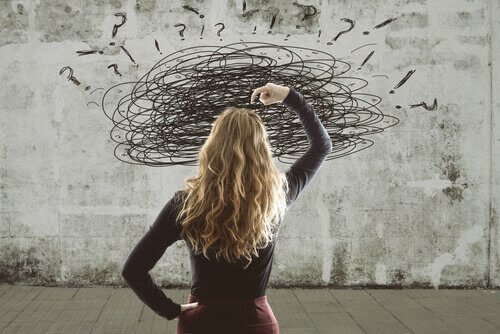 Thinking too much increases our chances of mental illness, interferes with problem solving and disturbs our sleep.
Thinking too much increases our chances of mental illness, interferes with problem solving and disturbs our sleep.Thinking too much places us in the past, where regrets lurk, and the future, where worries await. The past and ruture aren't real. They're just mental constructs, but your brain thinks they're real and your body reacts accordingly.
We have familiar terms for this kind of thinking: rumination, perseverating, crossing a bridge before we come to it. In Zimbabwe, tribes have an expression that perfectly sums up most modern psychological problems. It’s kufungisisa, which could be translated literally as ‘thinking too much’, either about our present-day problems or about traumatic events from the past.
It is considered to be causative of anxiety, depression, and somatic problems. Kufungisisa is associated with a range of psychopathology, including anxiety symptoms, excessive worry, panic attacks, depressive symptoms, and irritability. In a study of a random community sample, two-thirds of the cases identified by a general psychopathology measure were of this complaint.
Kufungisisa is actually mentioned in our Diagnostic and Statistical Manual of Mental Disorders (DSM).
Now you can't just decide to stop thinking too much. You need to replace thinking with something else Being aware of what's happening around you in this moment anchors you in the moment and rescues you from the past or the future, where distress awaits.
To be aware of this moment, check in with your senses. What do you see, taste, feel, hear, smell? You knew about those senses. Here are more:
- Thermoception (Skin) Lack or increase of heat (temperature)
- Proprioception (Body Parts) Awareness of body parts without visual input
- Nociception (Whole Body) Sensation of pain in the body (skin, body organs, etc.)
- Equilibrioception (Whole Body) Sense of balance (determined by ear fluid)
- Kinesthetic Sense (Whole Body) Sense of acceleration
- Tactility (Mostly the Skin) Perception of pressure
- Chemoreception (Blood and Brain) Sensation of hunger, thirst, vomiting and suffocation
- Stretch Reception (Muscles, Joint and Skin) Sense of gag reflex, gas distension, excretion, etc.
- Cutaneous Reception (Skin) Sense of skin vasodilation (like flushed skin)
- Synaesthesia (Body Parts) Combination of senses (like smiling at someone’s voice)
A good place to practice being in touch with your senes is on a walk where plenty of sensory triggers await. Don't stare at the ground. Keep your head up to see. Make a mental note of what you're seeing, hearing, smelling, feeling. Imagine that you're an artist painting the scene. How would you do it? Or a writer describing it -- what words would you choose?
~ Kephissa